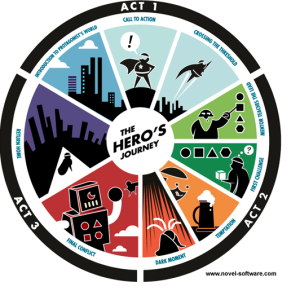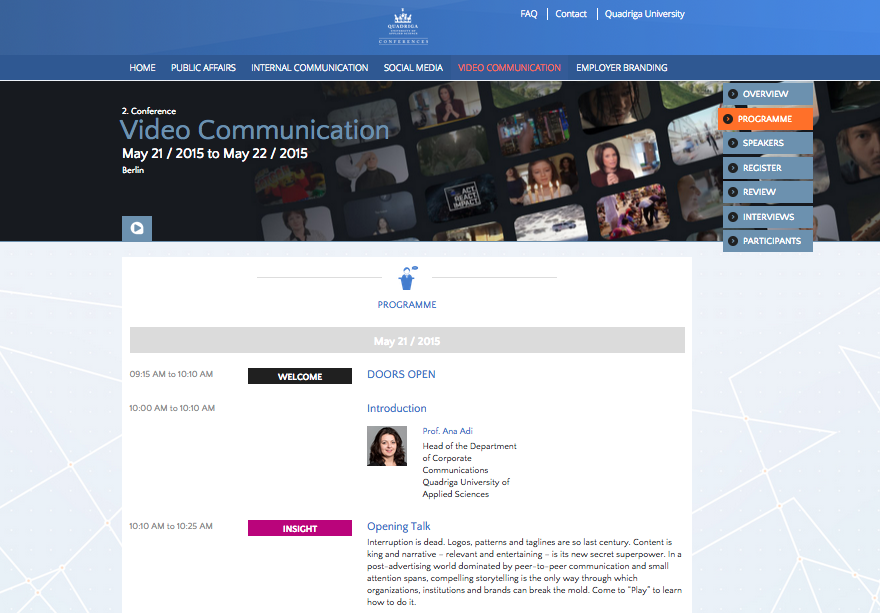Quadriga University was the host of the 2nd Video Communication International Conference (Play)Â on the 21st and 22nd of May and I had the pleasure of moderating it for the two days. Although I have moderated academic conference sessions before, order this was the first time I have moderated an entire conference.
The line up was impressive including heads of communication departments from corporations, page institutions, discount unions and NGOs such as Samsung Europe, Getty Images, European Parliament, Thomson Reuters Foundation or Kommunal and this year’s talks were focused on digital media and viral communications.
 In my opening address I hinted to the increasing importance of storytelling in the context of rising in popularity of visual platforms like Pinterest and Instagram as well as of higher adoption and impact of Facebook shared videos in comparison to YouTube. I mentioned Harvard Business Review’s study on emotions that make content viral and Copyblogger’s Anatomy of a Marketing Story. I should have added the Hero’s Journey to it but time was limited. I also raised some questions about how emotion can be harnessed to the advantage of organisations without turning them into professional emotional manipulators and the implications (ethical, human, professional) that the increasing demand for visual communication would need to consider.
In my opening address I hinted to the increasing importance of storytelling in the context of rising in popularity of visual platforms like Pinterest and Instagram as well as of higher adoption and impact of Facebook shared videos in comparison to YouTube. I mentioned Harvard Business Review’s study on emotions that make content viral and Copyblogger’s Anatomy of a Marketing Story. I should have added the Hero’s Journey to it but time was limited. I also raised some questions about how emotion can be harnessed to the advantage of organisations without turning them into professional emotional manipulators and the implications (ethical, human, professional) that the increasing demand for visual communication would need to consider.
My slides are below. Also below is a Storify summary of the event.
The tweets with lessons learned are very interesting and worth remembering like for instance Winston Eavis’ from Samsung Europe recipe for memorable content (be entertaining, be newsworthy, be surprising, do not forget the brand’s proposition, be bold and imaginative) or Dalius Morkvenas from Invest Lithuania on not giving into political or hierarchical pressures.Â
My take on this is: video communication, like PR, is in search for authenticity and has an equally great need for meaningful measurement. In terms of the future, the shapes seem to be changing (from now supersensory, textured and full of wonderlust) however the themes that captivate attention stay the same (women, family, business for Getty Images; tabu topics for HSBC NOW; humanity and its expressions of support or lack of for the likes of Thomson Reuters Foundation).
